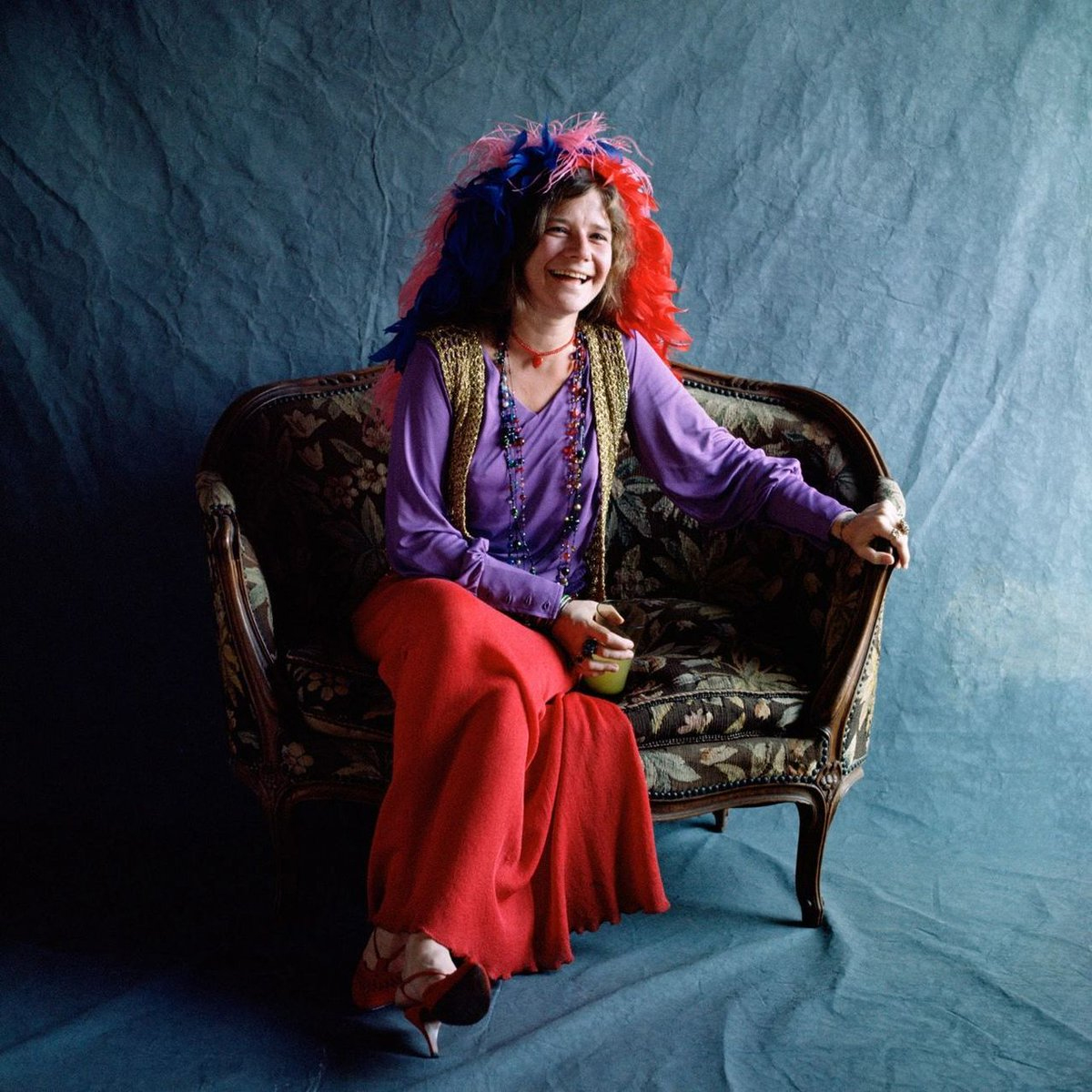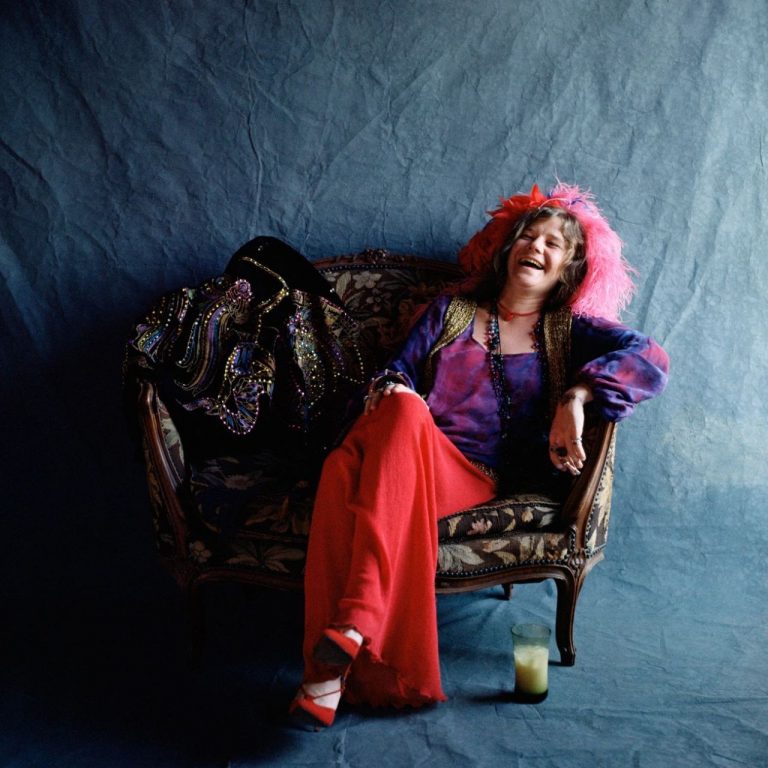Fifty years on, Janis Joplin‘s posthumous album remains a striking testimony of her ability to create beautiful things out of the pain the outside world inflicted on her
In the summer of 1970, Janis Joplin went on the Festival Express tour with her newly assembled band Full Tilt Boogie, with which she would record her final studio album Pearl. After various attempts at finding a competent backing ensemble she truly related to—she had left Big Brother & the Holding Company in 1968, and the subsequent Kozmic Blues Band only lasted throughout 1969—Janis was ecstatic to have finally gathered a group of musicians that adequately understood her: “I can tell those cats what to do and they’ll do it!,” Alice Echols quotes her saying in the Scars of Sweet Paradise biography. “It’s my band. Finally it’s my band.”
Unfortunately, this realization also coincided with an acceleration of Janis’s descent into the abyss, her self-destruction becoming more and more visible not only to people around her but also to the public in general. “This period really was Janis’ undoing,” an entry on this website confirms. “She drank more, did more drugs, acted out & got arrested. It was literally too much pressure.” Adding to the downward spiral—or, one could argue, precipitating it—was Janis’s own emotional unfulfillment. “I’m lonely,” she would often say, voicing a sentiment that seemed to have been present throughout most of her life. Describing her as “a woman in the throes of shredding her inhibitions by displaying her pain,” Maurice Isserman and Michael Kazin explain in America Divided: The Civil War of the 1960s that not even fan adoration managed to shake off this sadness: “On stage, I make love to 25,000 different people, then I go home alone” would remain one of her most famous quotes.
Pearl emerged as the alchemical result of these two opposite forces. Released 50 years ago in January, Janis Joplin’s posthumous album is a striking testimony of her ability to create beautiful things from the pain inflicted on her by the outside world—just like the formation of a pearl occurs as the oyster’s response to an external irritant. Containing some of her most well-known songs (“Mercedes Benz”, “Me And Bobby McGee”, “Cry Baby”), Pearl discloses an underlying paradox that lies exactly in the way it depicts an increasingly lost little girl that seemed to have found her voice at last.
This is not to say Janis hadn’t enjoyed enthusiastic acclaim in the previous years. Even before her departure from Big Brother (which partly happened precisely as a consequence of her bandmates resenting her success), her superstar aura was already shining bright, ultimately leading to expectations growing proportionally. So it comes as no surprise that I Got Dem Ol’Kozmic Blues Again Mama!, her debut solo album released shortly after her Woodstock appearance, met with a lukewarm reception largely resulting from a generalized disappointment with her shift from acid rock to a more soul/R&B sound. As expected, an already self-conscious Janis grew slightly discouraged and even apprehensive regarding her immediate future: “That was a pretty heavy time for me,” she would later confess. “It was really important, you know, whether people were going to accept me or not.”
It was also around this time Janis started insisting friends called her “Pearl”, stating that she was “tired of being Janis.” A probable shield for her trademark insecurities, the nickname allowed for Janis to slightly detach herself from a past that didn’t always make for the best memories. But even though this “persona” would eventually become the title and inspiration for her new album, it wasn’t as widely used as Janis wanted: “Actually none of Janis’s friends bestowed her with that name too often,” her friend and publicist Myra Friedman informs in biography Buried Alive.
Sessions for Pearl began in late July 1970 in Los Angeles, with Paul Rothchild taking over production duties. Known mainly for his work in the first five Doors’ albums (he would withdraw from L.A. Woman that same December due to disagreements with the band and a frustration with Morrison’s alcohol problem that scarily mimicked Janis’s), Rothchild would later call Pearl “one of the greatest albums of my career, a labor of total love by the most loving and dedicated musicians I’d ever worked with.”
During the album’s recording, Janis went back to her Port Arthur hometown for her high school reunion, expecting to heal past traumas of bullying and estrangement through her newfound triumph. “Her graduating class was shocked to see that the girl they teased mercilessly didn’t just overcome their torment—she became everything they were too afraid to be,” a report reads, with the accompanying clip showing journalists encircling a bubbly (yet visibly nervous) Janis, who suddenly becomes gloomier when she confesses she wasn’t even asked to prom.
This eagerness of trying to change her own narrative transpires from Pearl and its recording process. In her book Pearl: The Obsessions and Passions of Janis Joplin, biographer Ellis Amburn refers to the album as Janis’s “greatest artistic unfolding since joining Big Brother in 1966,” citing a motivated Janis telling Full Tilt Boogie pianist Richard Bell she wanted to “start planning another album right away.”
Opening with her own composition “Move Over”, in which she complains about a lover who says that “it’s over” but still hangs around her, the album’s main themes ring unsurprisingly auto-biographical, as they revolve around her omnipresent feeling of loneliness and abandonment (“A Woman Left Lonely”, “Cry Baby”), that appears juxtaposed with a profound need of being unconditionally loved (“My Baby”, “Get It While You Can”, “Trust Me”).
And, of course, there’s “Me And Bobby McGee”, which together with “Mercedes Benz” remains one of her trademark songs. Written by Kris Kristofferson (who remained oblivious to the fact that Janis had recorded it until after her death), it fitted her voice and sense of urgency like a glove: “Freedom is just another word for nothing left to lose” would forever echo as the voice of a generation she was unknowingly about to become a martyr of.
An unwillingness to over-produce the ensemble in Janis’s absence (who a couple of weeks prior to her death had declared that the record was “just about finished” anyway) made for two song ‘anomalies’: a cover of Nick Gravenites’s “Buried Alive In The Blues” was left an instrumental as she was supposed to record vocals the very day she was found dead, while “Mercedes Benz”, which had initially come about as a joke, appears as an a cappella first take (it remains unclear if the song was ever supposed to stay like this).
Pearl was released a mere three months after Janis’s untimely death, and a week before what would have been her 28th birthday. Although one would always expect critics to be generally sympathetic to the circumstances and therefore refrain from overly negative remarks, the album’s immediate acclaim supplanted most expectations: “Fortunately, Pearl is a good record and Janis is often magnificent,” a relieved Jack Shadoian wrote in Rolling Stone‘s album review, while The New York Times‘ Mike Jahn declared Pearl had “more substance and depth than her previous attempts, and is a more convincing blend of power and precision than she and her previous bands have accomplished.”
Embodying her dizzying trajectory in a tragic yet candid manner, Pearl not only remains Janis Joplin’s biggest-selling album to date but also her signature opus, uncannily representing her eternal duality. This is best described by her road manager John Byrne Cooke, who, in an interview, pointed out that “What people know is that dynamic personality on stage, and […] the kind of brash woman of the streets which was part of the public personality that she projected. But […] she could be this little girl who was so full of doubt about whether she was doing a good enough job that she could come off stage with this tumultuous ovation happening out there and saying did I do OK?”
Yet it was the Rolling Stone obituary that perhaps summarized it best by stating that “superstars just fade, but cultural heroines die hard.” Janis seemed to always be on the quest for being loved, and Pearl represents both this internal struggle and an indisputable victory. With every new generation that has since turned onto her music as a relatable refuge that viscerally depicts both beauty and pain, it’s fair to say Janis has been cherished enough these past 50 years to last her a million lifetimes.
A 50th Anniversary edition of Pearl in white vinyl is being released this month by Vinyl Me Please, but pre-orders have sold out and it’s waitlist-only now. There’s also an official 2-LP box set coming out in July, and a scrapbook containing Janis Joplin’s writings and lyrics is expected in June. A special exhibition at the Rock’n’Roll Hall of Fame Cleveland museum was supposed to open in May, although it’s unclear if plans haven’t changed due to COVID-related circumstances.


